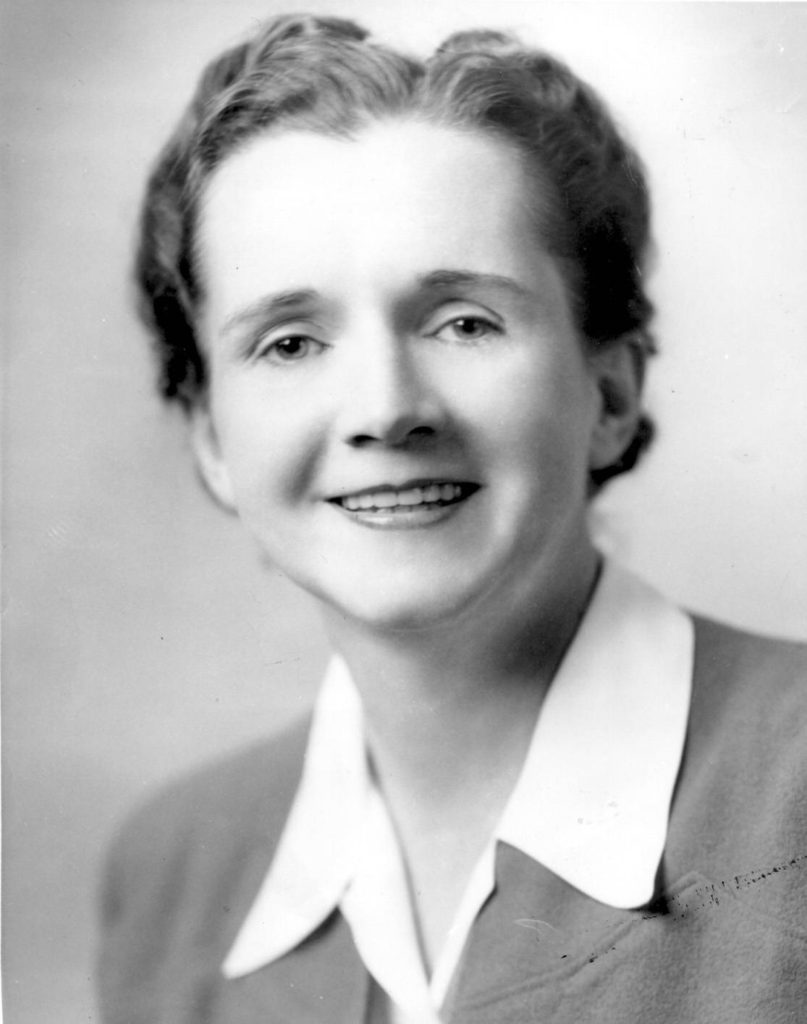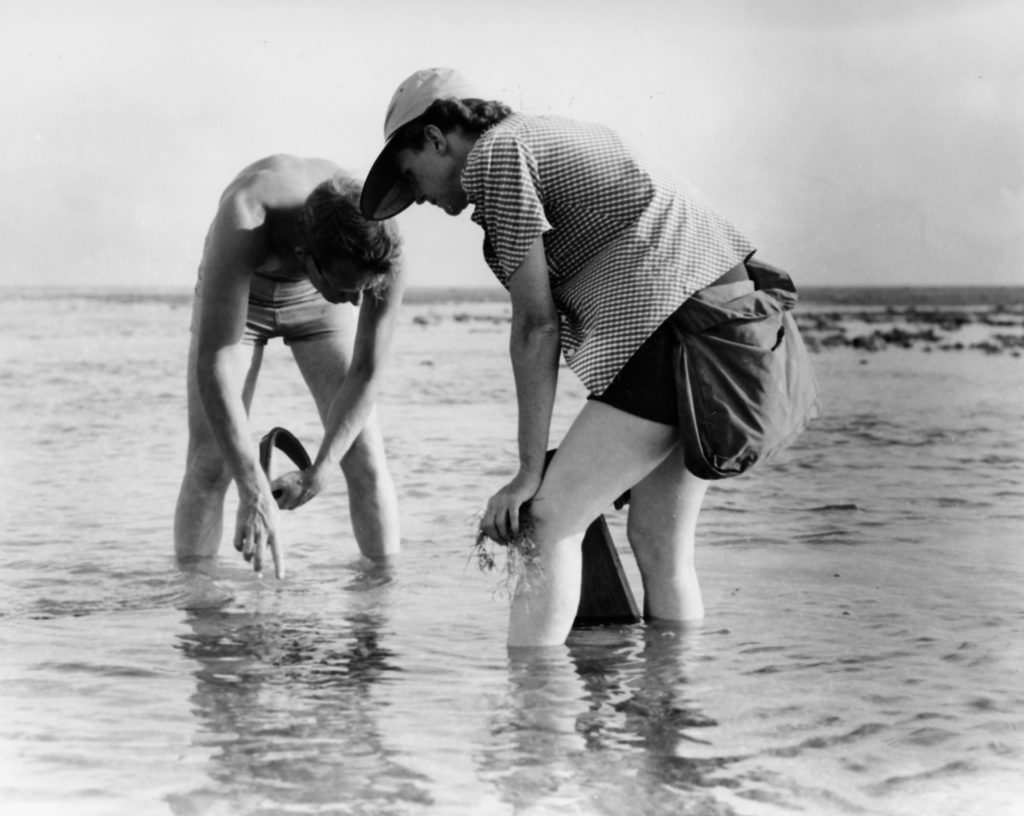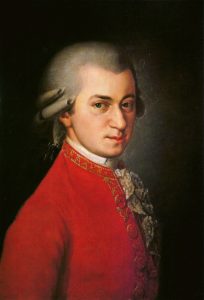When President Abraham Lincoln met Harriet Beecher Stowe, author of Uncle Tom’s Cabin, he said to her, “So you are the lady who started all this.” When Senator Abraham Ribicoff met Rachel Carson just before she gave testimony to his committee, he said the same to her. Ribicoff was wholly correct—Rachel Carson had started what would become the modern environmental movement.
Rachel Carson was born on May 27, 1907, near Pittsburgh. As a girl, she loved two things—nature and writing. “I can remember no time,” she said, “when I wasn’t interested in the out-of-doors and the whole world of nature.” She began writing stories for magazines at an early age, and published her first paid contribution at age eleven. She would later say that she had become a professional writer then. It seemed inevitable, even then, that Carson would combine her two interests into one career.

Carson’s mother taught her to be an independent thinker and observer, traits she carried throughout her life. At college, she majored in biology, an unusual field for women at the time, and, even more unusually, went on to complete a Master’s degree in marine biology at Johns Hopkins in Baltimore. She fell in love with the sea the first time she saw it and never again lived or worked far from saltwater. Except for short intervals, she and her mother lived together in a small ranch house in Silver Spring, Maryland, and later summered in a cottage on the Maine shoreline.
Through her teacher and mentor in graduate school, Carson landed a temporary job with the U.S. Bureau of Fisheries (now the Fish and Wildlife Service) writing radio scripts about fisheries. Her work was so exceptional—combining a solid scientific approach with a lyrical style—that she was hired permanently. She became the first professional scientist hired in the history of the agency. Eventually, she became head of the agency’s editorial office, effectively running a small in-house publishing enterprise. She worked there for fifteen years.
Carson also wrote independently while she worked for the government, authoring magazine articles to supplement her meager salary. She published her first book about the sea, Under the Sea Wind, in November, 1941. Critics loved it, but it sold few copies—the Japanese attack on Pearl Harbor a month later kidnapped the nation’s attention. But, she persisted, publishing a second book about the sea, The Sea Around Us, in 1951. This time, the book was hugely successful, landing at the top of the best-seller list for months. A third book, The Edge of the Sea, followed in 1955, cementing Carson’s national reputation.

As the 1950s came to a close, the U.S. was wildly prosperous, but larger worries, including the Cold War and nuclear annihilation, loomed like a storm cloud over the world. One such worry was the effect that broadcast spraying of pesticides was having not only on the targeted insects, but also on beneficial insects, fish, birds, pets and even humans. Carson’s influential friends tried to persuade her to take up this cause, but she wanted nothing to do with it. Carson was a shy, private person who didn’t like the spotlight. Even though her books were famous, she protected her privacy fiercely.
However, when she could find no one else to address the issue of pesticide spraying, Carson took the plunge to write “the poison book.” She spent several years researching the topic, compiling obscure reports, corresponding with experts and connecting the threads among pesticides, wildlife mortality, and human health. DDT was the primary target, but Carson also explored the impacts of other chemicals we now call “persistent organic pesticides.” She presented her conclusion—that large-scale aerial spraying of pesticides was poisoning the earth—in her 1962 book, Silent Spring.
Like her earlier books, Silent Spring was an instant success. The public was won over by the logic and detail of her analyses—Silent Spring had more than 50 pages of references. The book caused massive backlash from the chemical and agricultural industries, which cast Carson as a fear-monger without scientific credentials. Moreover, they claimed, she was a childless spinster with no authority to speak about future generations. A typical response claimed, “isn’t it just like a woman to be scared to death of a few little bugs? As long as we have the H-bomb everything will be O.K. She’s probably a peace-nut, too.” And a communist.
As we now know, Rachel Carson was largely correct in her conclusions (her assertions about human cancer were not accurate), and society rallied in support of her. Silent Spring launched a decade of new laws and approaches to chemical use and environmental protection. The Clean Water Act, Clean Air Act, Endangered Species Act, and National Environmental Policy Act, along with the creation of the Environmental Protection Agency, are all examples of her impact. Rachel Carson has been recognized as one of the 100 most influential people of the 29th Century, largely because of Silent Spring. She was, indeed, the lady who started it all.
Unfortunately, Rachel Carson didn’t live long enough to see most of these changes. She died in early 1964, just before her 57th birthday and only 18 months after Silent Spring appeared. Throughout her research and writing for the book, she was suffering from cancer that spread relentlessly through her body. She dealt with her approaching death just as she had all aspects of her life—independently and observantly, logically and in a natural context. She reflected on the life of the monarch butterfly and then on her own life:
“For the Monarch, that [life] cycle is measured in a known span of months. For ourselves, the measure is something else, the span of which we cannot know. But the thought is the same: when that intangible cycle has run its course, it is a natural and not unhappy thing that a life comes to its end.”
References: Nielsen, Larry A. 2017. Nature’s Allies—Eight Conservationists Who Changed Our World. Island Press, Washington, DC. 255 pages

